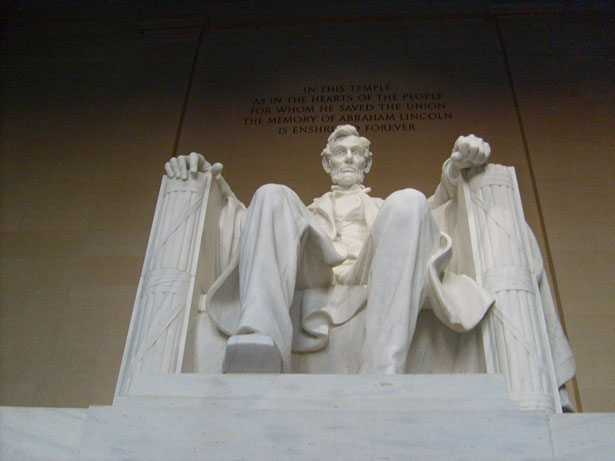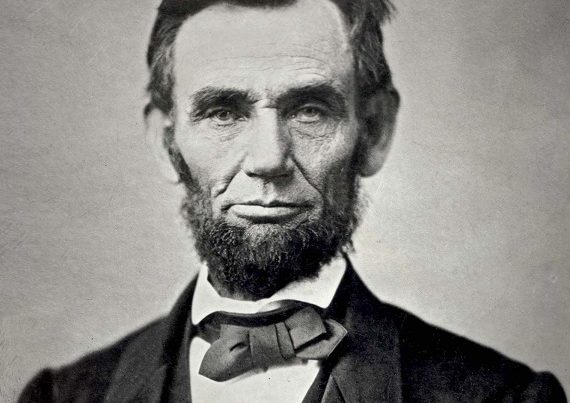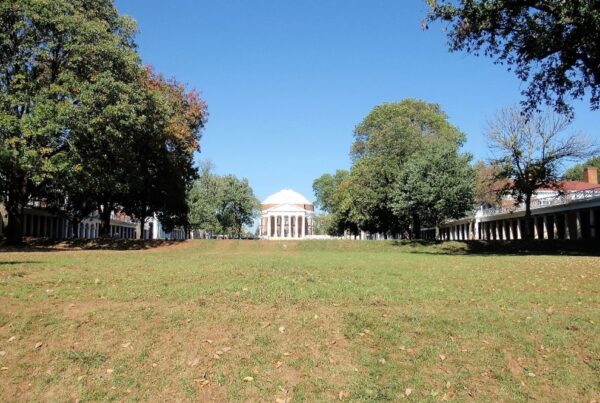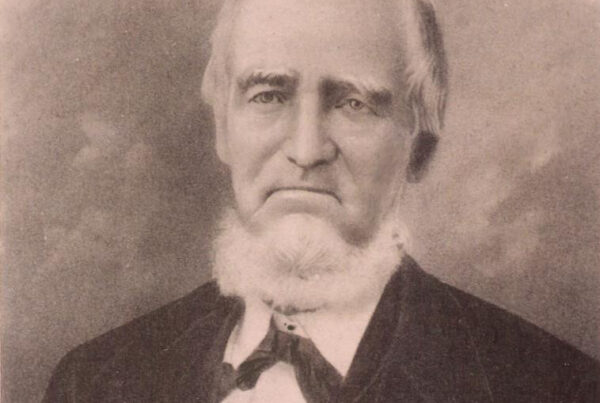
Abraham Lincoln is widely regarded as one of the nation’s greatest Presidents.[1] He is the subject of at least 15,000 books.[2] A popular poem (later set to music) responded to Lincoln’s call for troops in biblical terms: “We are coming, Father Abraham, three hundred thousand more.…”[3] Upon Lincoln’s death, Bishop Horatio Potter wrote that “[a] glorious career of service and devotion is crowned with a martyr’s death.”[4] Lithographs in the aftermath of the assassination depicted the apotheosis of Lincoln. In short, Lincoln has been venerated among both scholars and the public.
Despite the mostly reverent treatment, little has been written about Lincoln’s treatment of civil liberties during the Civil War.[5] Even then, the few full-length scholarly works have generally excused Lincoln’s conduct or otherwise justified his actions as necessary to conduct the war. One historian admitted “[t]he skimpiness of the serious literature suggests that historians have been more or less embarrassed by Lincoln’s record on the Constitution.”[6] As a result, there is a gap in the scholarly work regarding President Lincoln’s role regarding civil liberties.
This paper seeks to fill that gap by examining Lincoln’s conduct as he tried to keep Maryland in the Union in 1861. Ultimately, Abraham Lincoln succeeded through a deliberate campaign to suppress civil liberties, including the illegal suspension of habeas corpus, arbitrary arrests of elected officials, interference in Maryland’s elections, and the shuttering of newspapers sympathetic to the Confederacy. Whether Maryland would have seceded may never well be known, but Lincoln’s calculated conduct ensured that it would not happen.
Maryland’s complex role in the Civil War grew out of several factors that developed during the sectional crisis of the 1850s. A border state that was home to nearly 90,000 slaves, Maryland became increasingly connected to the industrial North when the Northern Central Railway was completed in 1858 between Baltimore, Maryland, and Sunbury, Pennsylvania.[7] But most important was its geography, surrounding Washington, D.C. on three sides.[8] Writing about his father John Adams Dix’s responsibilities as commander of the Department of Maryland in 1861, Morgan Dix wrote that “the loss of Maryland would have been the loss of the national capital, and perhaps, if not probably, the loss of the Union cause.”[9]
The 1860 presidential election was another measure of the complexity of Maryland’s situation. Maryland voted narrowly for the Southern Democratic candidate John C. Breckinridge over the Constitutional Union candidate John Bell by 45.93% to 45.14%. Stephen Douglas captured 6.45%, while Lincoln netted just 2.48%, or less than 2,300 votes statewide.[10] In the weeks after the election, the Baltimore Sun was convinced that if South Carolina and other states of the deep South seceded, Maryland would soon follow: “If disunion proves inevitable, the line will be drawn North of Maryland.”[11] Based on the 1860 voting patterns, historian Lawrence M. Denton concluded that “Maryland, if free to choose their own course, would have…stay[ed] with their section and join[ed] the states of the upper South in the Southern Confederacy.”[12]
Baltimore was particularly hostile to Lincoln, and home to an alleged plot to assassinate the President-elect as he passed through on his way to Washington.[13] When private detective Allan Pinkerton convinced Lincoln to pass through Baltimore under cover of darkness, the Sun blasted Lincoln, declaring that “[w]e do not believe the Presidency can ever be more degraded by any of his successors than it has been by him….” the night before the publicly-scheduled train.[14] Whether or not the threats against Lincoln were fully-formed, the potential for violence in Baltimore was genuine.
The critical tipping points that moved the nation from sectional conflict to war came in April 1861. For strategic reasons related to geography, Maryland’s fate was closely tied with that of Virginia. On April 4, 1861, Virginia voted against secession.[15] But two days later, Lincoln informed Governor Pickens of South Carolina that Fort Sumter would be re-provisioned with force, if necessary.[16] Then, on April 12, Confederate troops fired on Fort Sumter, and Major Robert Anderson surrendered the Fort the next morning.[17]
On April 15, President Lincoln pressed forward and called for 75,000 volunteers.[18] Two days later, the Virginia Secessionist Convention voted in favor of a referendum of secession, which was subsequently ratified by its citizens on May 23, 1861.[19] The reaction to Lincoln’s call for troops was exceptionally violent in Maryland, where Southern sympathizers attacked the 6th Massachusetts Regiment as they passed through the city.[20] Maryland Governor Thomas Hicks, together with Baltimore Mayor George Brown and Marshall of Police of Baltimore George P. Kane, decided to destroy the railroad bridges around Baltimore to prevent Union troops from passing through the city.[21] Then, on April 22, Governor Hicks, who had previously resisted such efforts, called for a special session of the Maryland legislature to consider secession.[22] Lincoln considered arresting the members of the legislature but decided to “watch and await their actions.”[23] If Maryland chose to arm its citizens against the United States, General Benjamin Butler was authorized to “adopt the most prompt and efficient means to counteract, even if necessary to the bombardment of their cities, and in the extremest necessity suspension of the writ of habeas corpus.”[24] A delegation of the Maryland legislature that met with Lincoln reported that they were “painfully confident that a war is to be waged to reduce all the seceding States to allegiance to the United States Government, and that the whole military power of the Federal Government will be exerted to accomplish that purpose.”[25] On April 27, Lincoln authorized suspension of the writ between Philadelphia and Washington, D.C.[26] This single event would set the stage for the most widespread violations of civil liberties throughout the war. The suspension of the writ, the military occupation of Maryland, and the ever-present threat of military force became the primary tools for keeping Maryland in the Union.
The sole legal challenge to Lincoln’s suspension of habeas corpus in Maryland came in the case of John Merryman, a Maryland militia leader who had participated in the destruction of the bridges and rail lines around Baltimore at the behest of Governor Hicks. Merryman was arrested on May 25, 1861, and imprisoned at Fort McHenry. Merryman filed a petition for a writ of habeas corpus with Chief Justice Roger Taney, who cited historical precedent and the placement of the Suspension Clause in Article I to rule that “the privilege of the writ could not be suspended except by act of Congress.”[27] The administration promptly ignored the decision and refused to honor the writ. The inability of the judiciary to enforce its decision meant that Lincoln’s suspension of the writ would go unchallenged and arbitrary arrests would continue.
The President sought to justify his decision to suspend the writ in a special message to Congress on July 4.[28] Lincoln argued that the Constitution was silent as to whether the President or Congress possessed the power to suspend the writ; and since Congress was not in session, the President could make such a decision lawfully. Moreover, even if the power belonged to Congress, he argued that his responsibility to “take care that the laws be faithfully executed” justified his actions: “are all the laws but one go unexecuted, and the government itself go to pieces lest that one be violated?”[29] Whether or not Lincoln intended Congress to ratify his actions, Congress did not enact any such legislation until 1863.[30]
Even while Lincoln was preparing his message to Congress, his suspension of the writ in Maryland was having an immediate impact. Union troops flooded into Maryland and seized control of Annapolis and Baltimore.[31] Arrested and imprisoned at Fort McHenry were Baltimore Mayor George P. Brown, the entire city council, Marshal of Police George P. Kane, and all the police commissioners as well as U.S. Congressman Henry May.[32] In September, military officials arrested at least 30 members of the legislature who were deemed to be sympathetic to the South.[33] Captured War Department correspondence indicated that the administration believed large majorities of both the House of Delegates and State Senate were likely to vote for secession, and carried out a deliberate effort to deny their ability to assemble.[34] In April, Lincoln had decided against arresting members of the Maryland legislature, acknowledging their right to assemble and debate, but now the administration now determined that no vote would be allowed.[35] The arrest and imprisonment of members of the state legislature not only denied them the opportunity to assemble but was designed to interfere with the fall elections. General Nathaniel P. Banks, who commanded military districts in both eastern and western Maryland during 1861, explained the administration’s strategy: “The secession leaders–enemies of the people–were replaced and loyal men assigned to….their duties. This made Maryland a loyal State….”[36] Many of these elected officials would remain imprisoned until November 1862.[37] Here the combination of arbitrary arrest, military occupation, and the threat of force represented a particularly acute chilling effect on civil liberties.
The extent to which the Lincoln administration went to suppress press freedoms in Maryland was exemplified by the case of Frank Key Howard. The grandson of Francis Scott Key, Howard was the editor of the Baltimore Daily Exchange, a newspaper sympathetic to the South. Arrested as “a measure of military precaution,” Howard was imprisoned and spent 14 months in Fort McHenry, Fort Lafayette, and Fort Warren.[38] When Howard’s account of a political prisoner was published in 1863, the publishers of his book were arrested.[39] Historian Sidney T. Matthews estimated that at least nine Baltimore newspapers, including Howard’s Daily Exchange, were suppressed during the war, including the arrest and imprisonment of their editors or owners.[40] Matthews concluded that “the arbitrary arrest of disloyal editors the action taken by the Government, for the first year and a half of the War, had no basis in law.”[41] The suppression of newspapers like the Daily Exchange as “military precautions” represented a particularly odious violation of freedom of the press known as prior restraint.
A review of the notable full-length scholarly treatments of Lincoln’s role in civil liberties during the war reveals a trend of generally excusing Lincoln’s conduct or otherwise justifying his actions as necessary to conduct the war. James G. Randall’s Constitutional Problems Under Lincoln, first published in 1926, reflected what one historian called Randall’s “curious ambivalence” toward Lincoln’s conduct.[42] Randall was at times highly critical of the Union’s suppressive policies but tempered their treatment by his experience in the Wilson administration during World War I. Randall himself wrote about his manuscript that “I may have gone too far in justifying the extreme war powers. My real convictions are…that many dangers lurk in the war power theory. Possibly my admiration for Lincoln has carried me too far.”[43]
Dean Sprague’s Freedom Under Lincoln, published in 1965, was also critical of Lincoln’s abuses of civil liberties. Sprague was particularly harsh on the administration’s policies in Maryland. But the author found Lincoln “scarcely touched by [the administration’s policy of suppression] personally,” “no intimate understanding of the workings of the executive branch, or of Washington politics,” and “reluctant to interfere in the day-to-day administration of the affairs of his cabinet officers.”[44] Instead, the villain was Secretary of State William E. Seward, who Sprague asserted had engineered the administration’s policy of repression. Sprague even called Lincoln a “humanitarian,” and charitably suggested that the President “would probably have sought…to prevent his successors from following this dangerous precedent.”[45] Sprague acknowledged that Lincoln was keenly aware of the suppression, and provided few examples of the President’s supposedly leniency.[46] But even if Seward was mostly responsible for carrying out the Union’s policies of suppression in 1861, one must wonder why Sprague did not hold the President at least equally accountable precisely because Lincoln alone suspended the writ of habeas corpus that allowed Seward’s suppression program to flourish. If Lincoln ever believed that Seward’s efforts went beyond the President’s limits, it is curious that the President so rarely intervened.
The most recent scholarly work on Lincoln’s treatment of civil liberties is Mark E. Neely, Jr.’s The Fate of Liberty: Abraham Lincoln and Civil Liberties. Neely examined the military records of civilians who had been arrested and imprisoned during the war after the President suspended habeas corpus. He concluded that more than 14,000 civilians were subject to arbitrary arrest, “but they were of less significance in the history of civil liberties than anyone ever imagined” because a majority of the arrests were “refugees, informers, guides, Confederate defectors, carriers of contraband goods, and other such persons as came between or in the wake of large armies. They may have been civilians, but their political views were irrelevant.”[47] Neely’s conclusion may very well be correct for many of the thousands of civilians arrested and imprisoned, but ultimately minimizes the brutal suppression of civil liberties in Maryland where legislators were imprisoned simply based upon how they might vote; where Union policies sought to interfere with the state’s elections; and where editors were imprisoned and newspapers suppressed for what they might publish.
Other notable works about Lincoln are worth mentioning here. In James M. McPherson’s Tried by War: Abraham Lincoln as Commander in Chief, the eminent Civil War historian presented a confusing and unsatisfying review of Lincoln’s role on civil liberties. For example, McPherson wrote “some of the Lincoln administration’s actions, such as the arrest of Maryland legislators and other officials in September 1861, seemed excessive and unjustified by any reasonable military necessity.”[48] He also recognized that Lincoln’s controversial actions provided precedents for later wartime presidents.[49] Yet McPherson then pivoted to proclaim that “the infringement of civil liberties from 1861 to 1865 seems mild indeed” as compared to later wars.[50] In this way McPherson fell into the same circular reasoning trap as James G. Randall, recognizing the dangerous precedents Lincoln established but then minimizing them compared to what they believed were greater threats in later wars that built upon those very precedents. In Abraham Lincoln and the Second American Revolution, McPherson found support for Lincoln’s violation of civil liberties in both Lincoln’s July 1861 message to Congress and in the Emancipation Proclamation.[51] According to Lincoln, the survival of the nation was at stake.[52] Finally, McPherson concluded that Lincoln shifted America from a nation based upon negative liberty to one based primarily on positive liberty, which the author regarded as an optimistic change.[53]
McPherson’s belief that Lincoln’s conduct of the war changed the nature of the nation raises some final points that remains both unanswered and highly relevant still today. It is worth considering if the preservation of the union and a second American revolution in favor of positive liberty was worth the cost. More fundamentally, it is worth asking what is it that was preserved in a nation so deeply changed by the conflict. Historian Richard Gamble suggested that Lincoln “deployed a power civil religion, civil history, and civil philosophy to superimpose one reading of American history onto any competitors.”[54] Thus, the nation has become a propositional nation rather than a nomocratic one.[55] Ultimately, Lincoln’s consequentialist approach to civil liberties ushered in a more powerful executive branch that Pulitzer Prize-winning historian Arthur M. Schlesinger, Jr. called The Imperial Presidency.[56] Presidential historian Clinton Rossiter called executive war powers a “constitutional dictatorship,” and believed that Lincoln’s “noble actions” and “tremendous” reputation largely justified his precedent.[57] Rossiter recognized that ‘[t]he only check upon [a less democratic and less patriotic] man would be the normal constitutional and popular limitations of the American system.”[58] One must wonder whether Rossiter recognized the irony of relying upon “normal constitutional and popular limitations” to check what virtually every historian has recognized as extra-constitutional powers.
Maryland, a border state home to nearly 90,000 slaves,
presented a complex challenge to the Lincoln administration because of its southern
sympathies, its economic connections to the North, and its strategic geography.
Lincoln quickly decided that the loss of Maryland would inevitably lead to the
loss of the national capital and most probably the war itself. As a result, the
President kept Maryland in the Union through a deliberate campaign to stifle
civil liberties that included the suspension of habeas corpus, the arbitrary
arrest and imprisonment of elected officials, the manipulation of Maryland’s
elections, and the suppression of newspapers sympathetic to the Confederacy.
Historians will continue to debate whether Maryland would have seceded without
the suppression of civil liberties, but Lincoln’s calculated strategy ensured
that it would not happen.
[1] C-SPAN, “Presidential Historians Survey 2017,” accessed April 17, 2019, https://www.c-span.org/presidentsurvey2017/.
[2] “Forget Lincoln Logs: A Tower of Books to Honor Abe,” NPR, February 20, 2012, https://www.npr.org/2012/02/20/147062501/forget-lincoln-logs-a-tower-of-books-to-honor-abe.
[3] O.H. Oldroyd, The Good Old Songs We Used to Sing, ’61 to ’65 (Washington, DC: 1902), 17.
[4] A Tribute of Respect by the Citizens of Troy, to the Memory of Abraham Lincoln (Troy, NY: Young & Benson, 1865), 29; Our Martyr President: Voices from the Pulpit of New York and Brooklyn (New York: Tibbals & Whiting, 1865).
[5] One exception is Ex parte Merryman, 17 F. Cas. 144 (C.C.D. Md. 1861), to be discussed later in this paper.
[6] Mark E. Neely, Jr., The Fate of Liberty: Abraham Lincoln and Civil Liberties (New York: Oxford University Press, 1991), 232.
[7] Robert L. Gunnarsson, The Story of the Northern Central Railway (Sykesville, MD: Greenberg, 1991).
[8] James M. McPherson, Battle Cry of Freedom (New York: Ballantine Books, 1988), 284-285.
[9] Morgan Dix, ed., Memoirs of John Adams Dix, vol. 2 (New York: Harper & Brothers, 1883), 24.
[10] John Woolley and Gerhard Peters, The American Presidency Project, UC Santa Barbara, https://www.presidency.ucsb.edu/statistics/elections/1860.
[11] “The Preservation of the Union,” Baltimore Sun, November 27, 1860, 2.
[12] Lawrence M. Denton, A Southern Star for Maryland: Maryland and the Secession Crisis, 1860-1861 (Baltimore: Publishing Concepts, 1995), 27-39.
[13] Michael J. Kline, The Baltimore Plot: The First Conspiracy to Assassinate Abraham Lincoln (Yardley, PA: Westholme, 2008).
[14] Ibid., 201-216; “The Great Lincoln Escapade,” Baltimore Sun, February 25, 1861, 2.
[15] McPherson, Battle Cry of Freedom, 255.
[16] Roy P. Basler, ed., The Collected Works of Abraham Lincoln, vol. IV (New Brunswick: Rutgers Univ. Press, 1953), 323-324.
[17] McPherson, Battle Cry of Freedom, 273-274.
[18] Ibid., 274.
[19] Ibid., 279-280.
[20] Ibid., 285.
[21] George L. P. Radcliffe, Governor Thomas H. Hicks of Maryland And The Civil War (Baltimore: Johns Hopkins Press, 1901), 56-57.
[22] Ibid., 62-70.
[23] Abraham Lincoln, “April 25, 1861, Order to General Scott,” in John G. Nicolay and John Hay, Complete Works of Abraham Lincoln, vol. 6 (Harrogate, TN: Lincoln Memorial University, 1894), 255-256.
[24] Ibid.
[25] John G. Nicolay and John Hay, Abraham Lincoln: A History, vol. 4 (New York: The Century Company, 1904), 172.
[26] Abraham Lincoln, “April 27, 1861, Order to General Scott,” in Nicolay and Hay, Complete Works, vol. 6, 258.
[27] U.S. Const., art I, § 9, cl. 2: ” The Privilege of the Writ of Habeas Corpus shall not be suspended, unless when in Cases of Rebellion or Invasion the public Safety may require it;” Ex parte Merryman, 17 F. Cas. 144 (C.C.D. Md. 1861) (No. 9487).
[28] Abraham Lincoln, “Message to Congress in Special Session, July 4, 1861,” in Nicolay and Hay, Complete Works, vol. 6, 297-325.
[29] Ibid., 309-310.
[30] George C. Sellery, Lincoln’s Suspension of Habeas Corpus as Viewed by Congress (Madison, WI: 1907), 246-263, 278-283.
[31] “Benj. F. Butler to Thos. H. Hicks,” in The War of the Rebellion: A Compilation of the Official Records of the Union and Confederate Armies [hereinafter OR], Series I, vol. II (Washington: Government Printing Office, 1880), 589-590; “General Butler’s proclamation,” in OR I:II, 30-31.
[32] “Order from General Scott for the arrest of the Commissioners,” OR I:II, 138-139; “Nath. P. Banks to the People of the City of Baltimore,” in OR II:I, 624-625 (Kane); “Allan Pinkerton to William H. Seward,” in OR II:I, 688 (Brown, May).
[33] “Arrest and Detention of Certain Members of the Maryland Legislature,” in OR II:I, 667-675.
[34] Secret Correspondence Illustrating the Condition of Affairs in Maryland (Baltimore, 1863), 14-30.
Denton, Southern Star, 152-153.
[35] Abraham Lincoln, “April 25, 1861, Order to General Scott,” in Nicolay and Hay, Complete Works of Abraham Lincoln, vol. 6, 255-256.
[36] Fred Harvey Harrington, Fighting Politician: Major General N.P. Banks (Philadelphia: University of Pennsylvania Press, 1948), 60.
[37] “Arrest and Detention of Certain Members of the Maryland Legislature,” in OR II:I, 667-675.
[38] “Case of Howard and Glenn of the Baltimore Exchange Newspaper,” in OR II:II, 778-779; Frank Key Howard, Fourteen Months in American Bastiles [sic] (Baltimore: Kelly, Hedian & Piet, 1863).
[39] Sidney T. Matthews, “Control of the Baltimore Press During the Civil War,” Maryland Historical Magazine 36, no. 2 (June 1941): 162.
[40] Ibid., 150.
[41] Ibid., 169.
[42] James G. Randall, Constitutional Problems Under Lincoln (Revised Edition) (Urbana, IL: The University of Illinois Press, 1951); Neely, Fate of Liberty, 228.
[43] Edwin P. Tanner to James G. Randall to Edwin P. Tanner, Sept. 20, 1924, in Neely, Fate of Liberty, 229.
[44] Dean Sprague, Freedom under Lincoln: Federal Power and Personal Liberty Under the Strain of Civil War (Boston: Houghton Mifflin, 1965), 157-159.
[45] Ibid., 299-303.
[46] Ibid., 301.
[47] Neely, Fate of Liberty, 233-234.
[48] James M. McPherson, Tried by War: Abraham Lincoln as Commander in Chief (New York: The Penguin Press, 2008), 269-270.
[49] Ibid., 269.
[50] Ibid., 270.
[51] James M. McPherson, Abraham Lincoln and the Second American Revolution (New York: Oxford University Press, 1990), 57-64.
[52] Ibid., 59.
[53] Ibid., 61-64.
[54] Richard Gamble, “Gettysburg Gospel,” The American Conservative, November 14, 2013, https://www.theamericanconservative.com.
[55] Ibid.
[56] Arthur M. Schlesinger, Jr. The Imperial Presidency (Boston: Houghton Mifflin Company, 1973).
[57] Clinton Rossiter, Constitutional Dictatorship: Crisis Government in the Modern Democracies (New York: Routledge, 2002), 223-239.
[58] Ibid., 239.







Interesting “read” on Lincoln. I graduated H.S. class of “52”, but never read any negative comments on Lincoln. Would love to see a bio on Eisenhower or LBJ, another 2 a~~holes we had as presidents.
I love to reference this paper to so called freedom loving people when they express that AL is their favorite or greatest President. They are short on history and long on feelings.